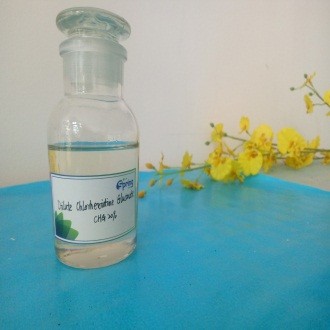chlorhexidine gluconate is a disinfect and antiseptic medicine; bactericide, strong function of broad-spectrum bacteriostasis, sterilization; take effective for kill gram-positive bacteria gram-negative bacteria; used for disinfecting hands, skin, washing wound.
Chlorhexidine is used in disinfectants (disinfection of the skin and hands), cosmetics (additive to creams, toothpaste, deodorants, and antiperspirants), and pharmaceutical products (preservative in eye drops, active substance in wound dressings and antiseptic mouthwashes).
Can chlorhexidine gluconate be used as hand sanitizer?
Both liquid chlorhexidine soap and alcohol based hand sanitizers are superior to plain soap and water for rapidly killing bacteria. Therefore, in hospital settings, both chlorhexidine sanitizers and 60% alcohol sanitizers liquid soap are equally recommended over soap and water for hand hygiene.
With the widespread outbreak of COVID-19 across the world, the prevention and control situation is becoming increasingly serious. Washing your hands regularly and keep hands clean is vital to ensure personal safety and help you prevent COVID-19 or other coronavirus diseases. Coronavirus diseases can be inactivated in vitro by using chlorhexidine gluconate of certain concentration, said Steven Kritzler, an expert with the Therapeutic Goods Administration (TGA). Chlorhexidine gluconate 0.01% and chlorhexidine gluconate 0.001% are effective in inactivating two different types of coronaviruses. Therefore, chlorhexidine gluconate is an important ingredient in hand sanitizer for COVID-19 prevention.
Can chlorhexidine gluconate be used in cosmetics?
In cosmetics, it mainly functions as a biocide, oral care agent and preservative. As a biocidal agent, it helps cleanse the skin and eliminates odor by destroying the growth of microorganisms. In addition to preventing bacterial growth on contact, it also has residual effects that inhibit microbial regrowth after application. Its anti-bacterial properties also make it an effective preservative that protects a cosmetic formulation from contamination and spoilage. It can be found in various personal care products such as mouthwash, hair dye, foundation, anti-aging treatment, facial moisturizer, sunscreen, eye makeup, acne treatment, exfoliant/scrub, cleanser and after shave.
Chlorhexidine gluconate is widely used in dentistry because of its ability to eliminate plaque formation. It is usually prescribed by a dentist. Chlorhexidine gluconate oral rinse is used to treat gingivitis (swelling, redness, bleeding gums). Rinse your mouth with the solution after brushing your teeth, usually twice daily (after breakfast and at bedtime) or as directed by your doctor. Measure 1/2 ounce (15 milliliters) of the solution using the supplied measuring cup. Swish the solution in your mouth for 30 seconds, and then spit it out. Do not swallow the solution or mix it with any other substance. After using chlorhexidine, wait at least 30 minutes before rinsing your mouth with water or mouthwash, brushing your teeth, eating, or drinking.
Post time: May-16-2022


